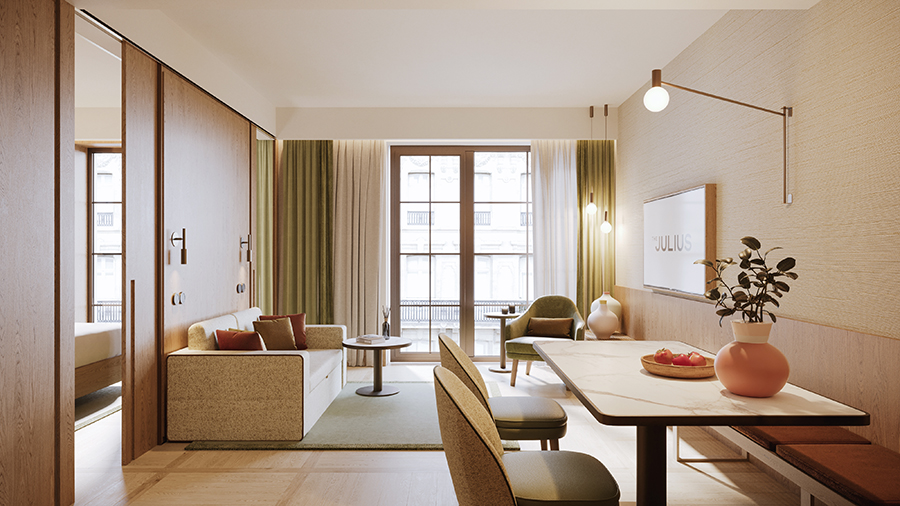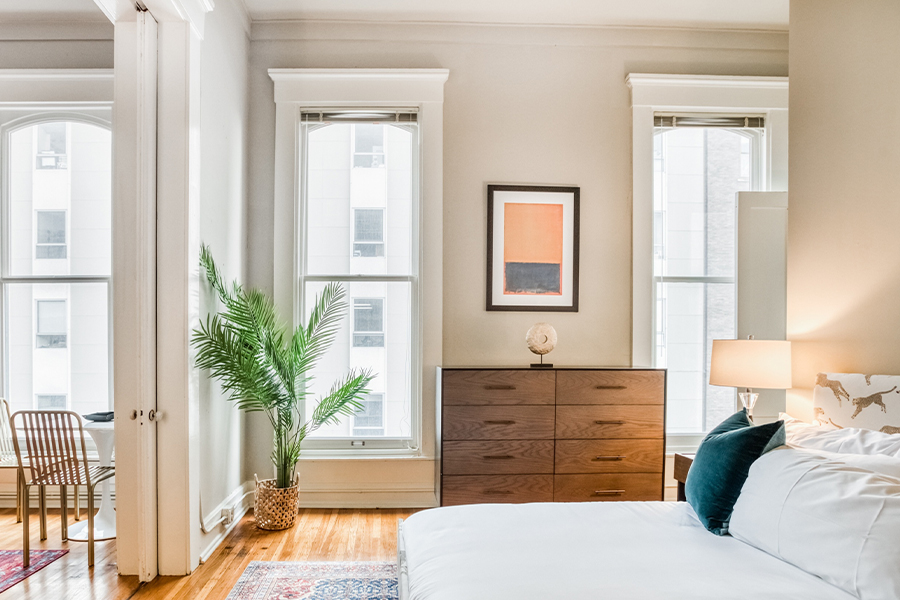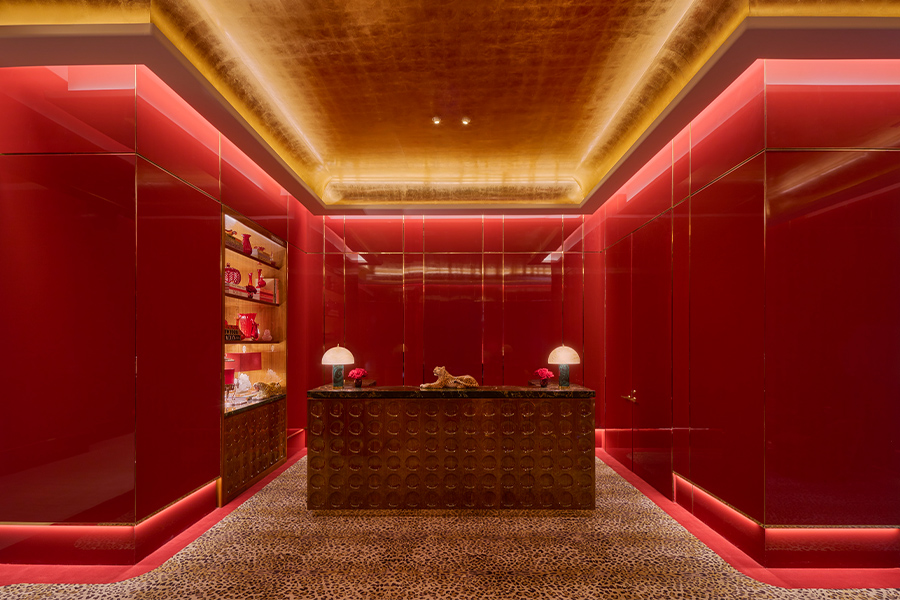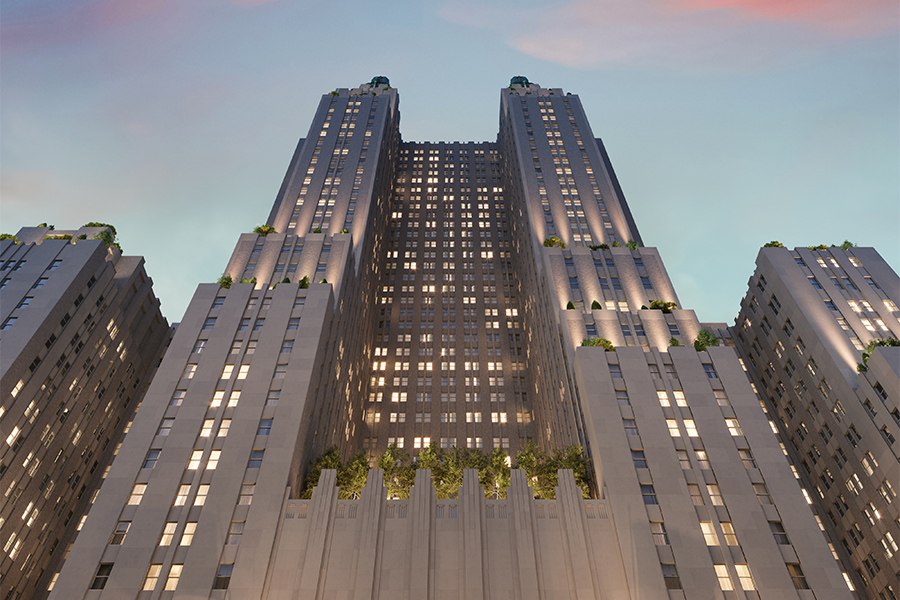As remote work becomes the norm, and many are exploring the idea of bleisure travel, extended stay properties and serviced apartments are more coveted than ever. From Locke Hotels’ design-led aparthotels sprinkled across Europe to new concepts like the Julius, a new longterm stay option set to debut in Prague in 2022, there is no shortage of high-end brands entering the market, and for good reason. A recent travel survey conducted by extended-stay brand Sonder and Ipsos found that 59 percent of respondents showed an interest in being digital nomads.
“Sonder is uniquely suited to meet travelers’ needs of privacy, more space, comfort, and cleanliness,” says Shruti Challa, senior vice president of revenue. Indeed, Sonder’s contactless approach to hospitality—including no-line lobbies, the ability to check-in from your phone, and a 24/7 digital concierge—pairs with its cozy spaces that include kitchens, en-suite laundry, and multiple bedrooms. By shifting the focus in the next few years from the leisure travel group to corporate and bleisure travel, Sonder, which has about 6,300 units around the globe, continues its “mission to revolutionize hospitality through design and technology to make a world of better stays open to all,” she adds.

A rendering of the Julius living space in Prague, featuring a design by Milan firm Matteo Thun & Partners
Founded in 2017, Mint House’s high-tech, low-touch model proved significant during the pandemic, with 81 percent of guests reporting they were working remotely out of Mint House apartments. Today, the company has 25 properties in 15 U.S. cities, with plans to expand to 3,000 units in 30 markets within the next 12 months. “The way we work, stay, and play has changed for good,” says Jess Berkin, Mint House’s head of brand, who notes that the company has increased its unit count by 85 percent in the last six months. With offices decentralized, “the ‘new nomads’ are adaptable and nimble and expect effortless experiences and inspired environments,” she adds.
Joining Sonder and Mint House is Oakwood, the prolific extended stay and serviced apartment operator that counts 80 international properties and 13,000 units across eight brands. “It is no longer about offering just an apartment, but rather a space that caters to the lifestyle needs of guests, providing them with the accommodations, services, and amenities they need,” says Oakwood CEO Dean Schreiber. This year, Oakwood Living joined the company as a new offering that delivers longterm leases with flexible terms for young families and professionals who are seeking community-based accommodations that support their ever-evolving lifestyles.

Mint House in Louisville, Kentucky resides within a historic high rise with downtown views
One of the most intriguing new additions to this growing segment is Catbird, Denver-based Sage Hospitality Group’s new extended-stay lifestyle brand that recently opened its flagship location in its hometown. “We were intentional from the very beginning and knew we wanted to be a pioneer in the new extended-stay industry,” says William Balinbin, principal of development, Sage Investments, a division of Sage Hospitality Group. “We saw a huge white space out there, as the existing model hasn’t evolved in 30 years.”
Catbird offers guests the comforts of home through chic, but comfortable guestrooms, designed by DLR Group. In fact, the 165-key Denver property launched a gamechanging solution, a patent-pending platform bed and storage system. A loft bed sits atop hidden wardrobe features that roll-out as needed: a closet for hanging clothes, drawers, and a table suitable for dining or working. Denver-based Swan Dive Design Studio spearheaded Red Barber rooftop bar and public spaces, with the lobby envisioned as an open-plan living room with a kitchen counter where guests socialize as if they’re in a friend’s home. Eclectic furniture has the feel of collected vintage treasures with rich textures and soft curves, and there are a plethora of plants that guests can adopt for their rooms. Sage has big plans to bring its long-stay brand to at least 15 cities, all based on specific criteria and micro-locations. As Balinbin explains, “We want people to walk out of the hotel and see a great brewery, a mom-and-pop restaurant, or an art gallery across the street—all the things in a place where you’d honestly want to live.”
This article originally appeared in HD’s December 2021 issue.
More from HD:
Nostalgia Reigns at Schwan Locke Aparthotel in Munich
4 Wineries Usher in a New Era of Design
Rosewood CEO Sonia Cheng on the Evolution of Luxury







